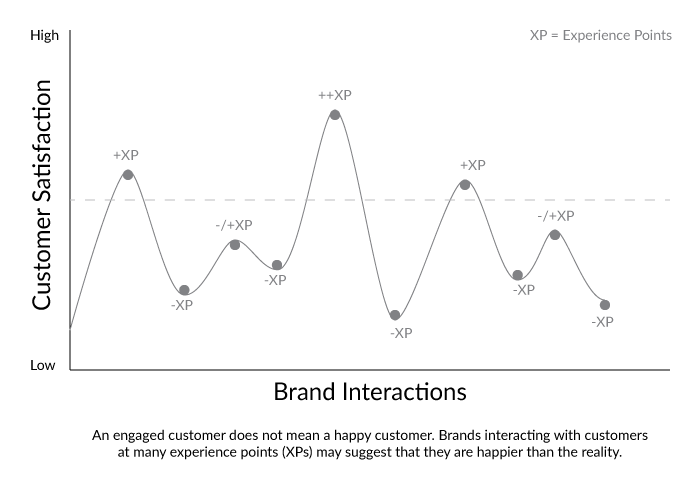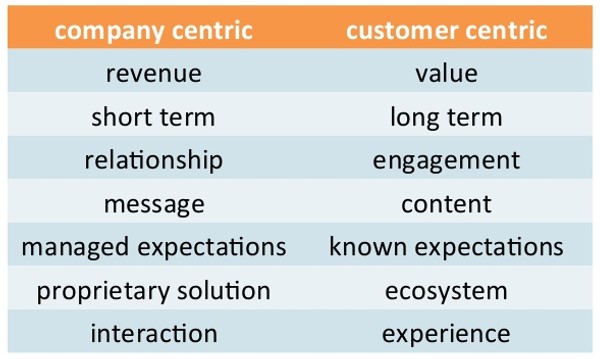Customer Experience is the WHY
Our planet is continuously buzzing with stories.
Stories of connecting dots along the path of our daily experiences.
From coffee shop chatter, meeting rooms, psychiatrist chairs, date nights and parents lecturing their kids to newsrooms, novels, blogs, social media platforms and product review websites. Even schools, governments, and religious establishments all share their knowledge through stories.
“I watched this well-directed movie the other night…”
“I just had the worst experience at the store…”
“I am so tired of today’s events…”
“We had a successful day at work…”
“The view right now…”
(right now is actually in the past by the time you see this picture)

Innovation means changing or creating more efficient products, ideas or systems, which consequently makes them new. Which is to say taking the experience and evolving it into a better and more relevant one.
It is also giving life to ignored ideas or dismissed possibilities.
When we start planning for the future happenings of our lives, we immediately recall our past experiences and how we can ‘do things better this time.‘
“We should remember to bring a different brand of bug repellent to the cottage next year…”
“When my phone contract is up with ABC company, I will be switching to a better one…”
“Next time I will try my coffee with Soy Milk and Honey…”
“I must find a company with a healthy culture for my next job…”
Finally, we come to the conclusion that it is within us to innovate and do things better this time. It stems from within; be it our approach, attitude, due diligence or anything else that we must do for an improved experience. So, we begin to customize our experiences.
We are always looking for valuable and memorable experiences that will remain with us for a long time. Memories to recall and share.
Most importantly, a sense of belonging, or a sense of purpose. It is why we are looking for such experiences and why we want to remember and share them with others.
We are living a customized experience; that is our life as it unfolds, and our life as we try to innovate it.
We are in fact customers of this life, experiencing all and everything that is on our journey.
Keeping in mind that life happens at our occurrences, which means that my experience and journey can never be the same as yours.
To this extent, our daily journey consists of endless points on our experience timeline referred to as Experience Points (XPs).
You can start to visualize now why a Customer Experience is everything that we do.
False Awakening
Companies have come to the realization that these XPs are opportunities on the customers’ journey to interact with them, watch their reactions, collect data and analyze it to learn further about how to increase their loyalty. With the data gathered and analyzed, companies then map out a guided journey for their customers showing relevance and a better understanding of what their customers are looking to experience.
Companies try to plan a purposefully induced interaction at every XP, which may suggest that customers are more happily engaged than the reality. The maximized attention to these interactions, while essential, is deviating the focus from the bigger and more significant end-to-end customer journey.

Consider a simple example of loyalty cards for a grocery store from both the customer and the company’s point of view.
Companies invest a great deal in coming up with reward program strategies. These programs acknowledge their customers at every transaction (XP) by giving them points (XP), while suggesting when (XP) and where (XP) they can gain more points (XP), and how to best spend (XP) their accumulated balance (XP).
For the company, the customer is showing loyalty through purchase, the same as all other customers making a transaction, and for each, they get a point. However, if you ask the customer, this transaction would not be described as just another purchase. It may be that the cake they bought is not just another cake, but it is for their child’s birthday. Companies that learn to understand the broader picture of these interactions, address the main reasons, and close the loop with feedback will be successful in managing and providing improved customized XPs. This, will undoubtedly result in an amplified customer and employee satisfaction, decreased churn and increased revenue.
With the increasing speed at which the markets and behaviors are evolving, experience points management is vital for collecting timely insights.
So, what do companies need to do to address the holistic customer journey?
Customers, not Consumers
Life, as we have established earlier, is a customized experience, happening at our occurrences. The minute this personalized experience is infiltrated by “feel this way” or “spend on this” and “do this now” it becomes a pushed and forced experience. Even if the forced experience at these touch points is relevant to the data collected about us, we are now consuming the experience. We might be engaged in the experience because it is relevant, but we are not necessarily satisfied. The reason being, it is not valuable. It is not authentic.
Consider a simple fictional example of a Manchester United Football Club fan who keeps getting updates about Manchester City Football Club because he is a football fan tagged as a “Manchester” supporter. It is possible that the fan will read the updates because they love football, yet at some point, it will become a frustrating experience.
The executives at companies have to lead in investing time and effort to evaluate analytical data and define the customer journeys (and their gaps) that have the most significant contribution to the dissatisfaction of the customers. With executives leading the way, companies will have a focused effort to course correct these journeys and pave the path for further enhancements. For journeys with bigger discrepancies, companies will need to look at both customer and employee data along with the operational process, then create an optimized road map with subsequent actions.
Either process will require companies to look into the customer, marketing, operational and competitive research data to get a clear picture of which journeys are negatively affecting the customer experience. To many companies, this is a never-been-done process and can be a lengthy one. However, companies will reap the fruits of their efforts through having a clear picture of the various journeys and will then be able to manage and prioritize all the experience points more efficiently. In return, customers start to build true loyalty.
As Customer Service Expert, Shep Hyken stated:
“People think of loyalty as a customer for a lifetime. But it is much simpler than that. It is about the next time, every time.” – Shep Hyken
Making the connection
Organizations, much like individuals as we read earlier, will come to the realization that it starts from within to have an improved experience. Also, as companies begin to redesign the customer experience based on how we can ‘do things better this time’, leaders must engage their employees and enable them to take part of this transformation.
The main reason of a poor customer experience always stems from within. Organizations must have their cross-functional teams come together to innovate and develop the solution. Only then, do these teams get to see – for the first time – the entire journey and identify the pitfalls together, then it will be easier to design a new and better way.

However, it does not stop there; they must then engage their customers in the design process to verify that it is to their satisfaction. Companies must see the business challenges through the eyes of the customer so they can offer an innovative customer experience and identify new opportunities. What did the customers need, and the company did not meet (pain points), to live their customized experience?
All of this will result in a more efficient process that works for more satisfied customers and establishes the authenticity of the company’s brand.
The company now becomes a mature customer-centric organization with an authentic customer experience. (Hey, that is a good story to share!)
What do we learn from Music, Sports, and Children?

A Hip Hop fan, a Heavy Metal fan, a Hockey fan, a Soccer fan; if you ask any of them why they are fans, they will gladly present you with a 1001 reason and rationale and express their eternal devotion to what they love. However, the one underlying reason for why they do what they do is an emotional connection called belonging.
That sense of purpose is a motivator that inspires people to take action. It is not the end goal for a brand; it is a shared goal with their customers.
Music fans do not buy their favorite band’s albums thinking it is a product they are consuming, rather it is part of the journey.
Now, this journey is also a customized experience.
The person does not receive instruction on when and where to listen to the music. Nor is given suggestions by the band members on which equalizer setting should be used to enhance their listening. That is something that the “fanatic customer” innovates on their own. The fan listening to the music will lead their journey.
Indeed, Customers lead their journey. Customers identify their purpose.
As a parent and a soccer coach, I continue to experience children relentlessly asking me “why” at every possible occasion.
Yes, they are also customers of this life, no?
Why brush your teeth? Why pay attention to the person talking to you? Why tell the truth? Why does it take so long to get from point A to point B?
Guess why? (Pun intended)
A.
Because children need the comfort of knowing that the purpose rhymes with their own. Moreover, if it does not, how can they then customize their experience towards the purpose.
That is also what adults do, and except for very few of us, we just choose to ask this question during our mind’s internal conversation rather than being vocal about it.
B.
Because children live in the now, and in the now, things have to make absolute sense, or it is frustrating for them.
Then again, this is what we do as customers waiting in line for an unexpected longer period of time at the bank; except our future also depends on our “in the now”; this will delay what’s coming next.
When children finally find out the why, something amazing starts to happen.
They stop whining.
They start thinking.
They innovate.
They redirect their journey.
They readjust their purpose.
CX is the Why
Companies, marketers and everyone in the business of servicing people must understand that if we try to impose our purpose on the customer journey we might have created awareness but we produced a lot of negative experiences.
Marketing is about motivating and facilitating decision making.
Therefore, we must approach the end-to-end journey as a true customer-centric experience, providing a shared goal, enabling customers to lead their journey and find their purpose.
